Fashion as Ritual: First Monday in May 時尚的禮儀
English Written by Deirdre Kelly Translated by Iris C. Chay and Ricky Lai
AS FEATURED IN EDITION NO. 3 OF FêTE CHINOISE MAGAZINE: LUCK + RITUAL
Photography provided by the Metropolitan Museum of art
Dress shown as an example of Chinese silk textiles made for export.
displayed at the Chinese Galleries, Douglas Dillon Galleries, Export Silk.
Clothes are powerful that way. They can transform and transfix, shape perceptions, spark and subdue desire. Clothes mark people as being individuals or conformists, standing with or apart from a crowd. It’s what makes fashion such a potent expression of personal identity. Clothes do more than just cover the body. They carry hidden meanings, making them open to interpretation much like works of art. Forms of material culture, they are embedded with clues about the thoughts, habits and mores of the people who wear them. On a grander scale, clothes are the barometers of civilization, measuring shifts in styles and attitudes along with entire belief systems. But I didn’t glean all this from peering at my own wardrobe.
每天早晨著裝前我總得試遍了滿衣櫃各式各樣的穿搭,從洋裝、褲裝、裙子到帽子、圍巾等等配件。遍尋了我的衣櫃仍然無法下定決心;到底今天的我想以怎麼樣的面貌出門呢?每天這樣的戲碼就這麼樣的循環上演著。是我的喜好隨著流行改變嗎?還是我對於我的衣物有了太多的期待與要求?
今天穿上我的荷葉邊,感到美麗自信堆滿在臉上,改天我卻喜愛迷彩裝滿足我內心戰士的勇敢英姿。我有個朋友在前往旅行前,打包行李成為了他最大的挑戰,因為他無法預期旅途中的自己會帶有甚麼樣的心情。他告訴我:「我的打扮是一種心情的表現。」「或者是說我的打扮是訴說著我對那天的某種期待。」
Guo Pei Evening gown.
My deeper understanding about fashion as a mirror of everyday life and culture comes courtesy of the Metropolitan Museum of Art’s Costume Institute in New York. I have visited this sartorial treasure trove often, lured by the richness of the vast and important collections contained within its walls. It’s one place where fashion, in all its variety, does not confuse me or leave me feeling wanting. It feeds a deeper yearning for knowledge.
The Costume Institute, you see, is not just interested in the kind and form of dress. It wants to uncover its history and symbolic function. Fashion has always had a ritualistic aspect. The act of dressing embraces repetition to form patterned behaviours that give people the illusion
they are in control of their lives. Women will dress in particular ways for the office, their families, and for nights out. Some women will simplify their lives by wearing the same look every day. A communications professional I know is frequently in the public eye and to ensure she never makes a mistake, fashion-wise, she dresses each day head-to-toe only in black. It’s her work uniform, and because it is fail-safe; it makes her feel empowered.
In China, clothes have long served a ritualistic purpose within society. Loaded with codes and symbols, for millennia they have distinguished the rich from the revolutionaries, the priests from the peasants, the fanatics from the functionaries, the simpletons from the scholars. Colour as well as cut denotes rank and prestige. In China, clothes bring good luck, and must be chosen carefully. Red clothes at a wedding symbolize love, success, and fertility. White worn at a funeral is a sign of mourning. Yellow carries associations of imperial grandeur, being the favourite colour of at least five Emperors who made it synonymous with gold. Wearing yellow continues to be auspicious. It is said to bring power and prosperity to the wearer.
Certainly yellow has been lucky for Chinese fashion designer, Guo Pei. When pop star Rihanna wore one of her bright yellow gowns to the Met Gala, the Costume Institute’s annual fundraiser, the Beijing-based couturier became an overnight sensation even though she had been working at her métier since the 1990s, albeit mostly in obscurity. Weighing 55-pounds, Pei’s canary-coloured cape dress came with a fox fur-trimmed train so massive, Rihanna — who discovered Pei online while researching Chinese couture — needed three attendants to lift it up the Met’s stairs. The hand-stitched garment became the focal point of The First Monday in May, director Andrew Rossi’s fly-on-the-wall documentary about the gala and its accompanying exhibition, China: Through the Looking Glass.
Dresses on display at the Chinese Galleries, Blue And White Porcelain.
Pei appears in the 2016 film as a link between past and present approaches to Chinese fashion. Rossi captures her in the studio where she had created the gown over a two year period, embellishing it with hand-embroidered floral scrolls and delicate hand-painted cherry blossoms before topping it off with a golden headdress. Embodying centuries of Chinese craftsmanship, the gown is a resurrection of ancient concepts of glamour and luminosity. Speaking through a translator, Pei proudly calls her fashion masterpiece a wedding dress for the Chinese nation.
This metaphor speaks to another kind of ritual. As the key costume a woman wears at her nuptials, the wedding dress symbolizes hope, fecundity and the promise of renewal. Through her devotion to China’s longstanding needlecraft traditions, Pei is helping to revive her country’s fashion industry and restore a sense of luxury to the Made in China brand. The sense that fashion is regenerative is a major theme of Rossi’s film.
服裝就是這麼有感染力。它可以將無形的感知與慾望轉達雕塑成一種具體的印象。服裝標記了你的個體或群體主義。流行其實是一種強烈的自我形象演繹。身上的服裝不單單只是覆蓋住我們的身軀,它還像藝術一般的將隱含著的訊息轉化傳達給大眾。物質文化的形式將穿戴者的想法與興趣嵌入其中,遠遠超越了單單穿戴著它的意義。在更深一層來說,衣物就像是人類文明的氣壓計,它度量了社會風格與態度的轉變以及整個信仰系統。然而我並沒有從我的衣櫃裡將這麼樣的多層面展現出來。
dresses referencing the Manchu robe, the modern qipao, at the Anna Wintour Costume Center, Imperial China.
我對流行更深一層的認識,將其視為日常生活與文化的鏡像,是來自紐約大都會服裝藝術學院。我經常參觀這個裁縫寶庫,被它豐富的館藏所吸引。它是一個讓流行以各式各樣的形式呈現的地方,豐富的新鮮感滿足了我的好奇卻也不帶給我困惑,更深一層面的補給了我對新知的強烈渴望。服裝學院感興趣的不單單只是各類的服飾,它更想解剖服裝背後的歷史與象徵意義。
流行時裝一直都有其儀式性的代表。裝身是一種重複性行為,人們藉此自覺對自我生活充滿掌握的能力。女士們會給予特定場合特定的服裝風格,從辦公室的專業,到家人相處時間的休閒,或是夜生活自信的打扮也是細心挑選的。當然也有些女士會利用單一化的服裝來簡化生活的複雜度。有位常在大眾眼裡的專業公關,為了確保不犯穿搭或是流行性的錯誤,她就這麼每天從頭到腳穿一身黑色的衣服。這就如她的工作制服。再者,這也是最保險的搭配,也為她加添一份自信。
sponsored by ferris wheel press.
The First Monday in May takes its title from the actual day on the calendar when the Met Gala yearly takes place in New York. The date is significant. May represents spring and Monday is the start of most people’s weeks. That it is the first Monday in May makes it all the more noteworthy as a symbol of new beginnings. Just as the pagan ritual of skipping around maypoles celebrates the arrival of spring, the Met Gala, with its ritual dance involving preening celebrities and cat-calling paparazzi locked in a kind of two-step, heralds the return of the new fashion season and a fresh crop of clothes. “The Super Bowl of social fashion events,” as it is described in the film, unfolds in a temple of high art, providing a theatrical celebration of a new Costume Institute exhibition, the party’s raison d’être.
In 2015, that exhibition was China: Through the Looking Glass, an examination of Eastern influences on Western aesthetics, in particular fashion as created by leading European designers like Yves Saint Laurent, Karl Lagerfeld, and Jean-Paul Gauthier. The exhibition also looks at Chinese culture in cinema, paying particular attention to Chinese-American actress Anna May Wong whose thigh-slit cheongsam image, as portrayed by Hollywood in the 1930s, paradoxically gave rise to Asian stereotypes in the West while inspiring the making of great fashion.
Chinese Galleries, Astor Forecourt, Anna May Wong.
Evening Dress, John Galliano (British, born Gibraltar, 1960) for House of Dior (French, founded 1947), autumn/winter 1998–99 haute couture; Courtesy of Christian Dior Couture.
Met curator Andrew Bolton created the exhibition in collaboration with production designer Nathan Crowley, presenting Eastern-inspired fashion alongside its source material. In one gallery are the Peking Opera costumes that influenced John Galliano when designing his Spring 2003 Christian Dior Haute Couture Collection. In another is a large 15th-century Ming porcelain storage jar with a cerulean dragon, an image replicated on a Roberto Cavalli strapless blue-and-white silk-satin evening gown. Through these juxtapositions Bolton makes the case that fashion is itself an art, worthy of serious study and reflection.
A parallel argument, explored in the film, involves the contentious issue of cultural appropriation. What does it mean to adopt or use elements of Asian culture within Western design? Does it celebrate or does it desecrate?
Rossi shows Bolton stepping bravely into this cultural minefield, aware that what he is attempting is controversial but feeling that he has no other choice. “The political hurdles the exhibition is addressing could be interpreted as racist,” Bolton says, but then forges straight ahead. He needs to up his own ante.
Successful in spite of its inherent controversies, China: Through the Looking Glass also ended up being the Costume Institute’s largest ever presentation, attracting over 800,000 visitors, surpassing the previous McQueen show, which had set a high standard. It involved more than 150 garments and months of delicate negotiations involving delegates from China as well as co-workers wary of fashion’s presence within a museum setting.The collection of Asian art at the Met is one of the largest and most comprehensive in the West, with more than 35,000 objects, ranging from 3 B.C. to the 21st century.
長久以來在中國服裝一直都是一種身分地位的象徵,它象徵著著裝者的不同身分地位、財富、勞動形式、生活方式等等。幾千年來,它將革命者從權貴中隔離,農民與牧師不混為一談,狂熱分子與職能部門、學者與傻瓜的區別。此外顏色亦是層級與名望的代言人。顏色在中國也能代表好運,因此著裝色澤勢必要精挑細選。紅色的服裝在婚禮中代表愛情、順利與傳宗接代。磨損的白色在喪禮中則代表著哀悼。黃色則是帝國壯麗的演繹。身為黃金的代言,黃色是過去五個王朝最深受帝王喜好的顏色。身著黃色有著延續吉祥的意義,據說能給穿戴者帶來繁榮與力量。
想當然而,黃色勢必一直以來是中國流行設計師的寵兒:郭培。當流行巨星蕾哈娜穿著亮黃色的禮現身大都會藝術博物館慈善晚宴﹝Met Gala﹞,這位北京的服裝設計師就這麼的一夜成名。郭陪自九零年代以來已在這一行已奮鬥了二十餘年,然而卻未能在這一夜前順利的嶄露頭角。蕾哈娜(Rhianna)身著的這五十五磅重的龐大金色斗篷禮服鑲嵌著狐狸毛草是如此的龐然大物。這重則需三位助理才能搬移到晚宴階梯上的傑作,是蕾哈娜在線上研究中國式服飾時後發現郭培的作品。這件純手工作品也成為導演安德魯·羅西(Andrew Rossi)的紀錄片—《潮遊鏡花水月》(The First Monday in May) 的焦點。該紀錄片記載了晚宴及其附帶的展覽—透視中國。
display at the Chinese Galleries, Douglas Dillon Galleries, Calligraphy.
郭培在2016的影片中扮演著中國流行服飾過去與現代的連結。導演羅西取景該紀錄片於郭培的工作室,這裡也就是那金黃傑作的產地。這作品耗時兩年的設計與工期,用手繡繡花捲軸和精美的手繪櫻花裝飾,然後再襯上金色頭飾。該禮服體現了幾世紀的中國工藝,復甦了傳統概念的美感、魅力與亮麗。透過翻譯,
郭培自豪地稱她的時尚傑作為新一代中華民族的婚紗禮服。這其中也隱喻了其與文化儀式的相提並論。作為女性於婚禮上的關鍵服飾,婚紗象徵著希望、繁榮與承諾更新。針對長久以來中國的傳統需求,郭培協助恢復中國時尚產業,復甦於中國品牌中的奢華感。時尚再生便是導演羅西於該紀錄片的主題。
片名《潮遊鏡花水月》(The First Monday in May),取自年度慈善晚宴(Met Gala)舉辦於紐約的實際日期。這個日子是重要的,由於五月代表春季的來臨,而周一則是大多數的我們一周的開始。因此五月的第一個星期一便象徵著新的開始。如同異教徒旋繞著五朔節花柱歌舞以慶祝春天的來臨,該慈善晚宴 (Met Gala)漫舞與名流與狗仔,預告著新時尚季節的回歸與新裝的來臨。
如同在紀錄片裡描述的超級杯社交時尚活動,它讓新服飾設計能展現在這高科技的聖殿,這也是這些派對活動存在的理由之一。在二零一五年,這展覧的主題為《中國:鏡花水月》,探視東方文化對西方藝術的影響,當中更聚焦於歐洲頂尖的時裝設計師,有 Yves Saint Laruent, Karl Lagerfeld, Jean-Paul Gauthier 等等。展覽亦考究演藝業中的中華文化,其中特別矚目的是荷李活三十年代美國華裔女星 Anna May Wong 著起高叉旗袍的影像,矛盾地同時衍生了西方對亞洲人的刻板印象和啟發了一些重要的時尚設計。
大都會藝術博物館策展人 Andrew Bolton 與著名產品設計師 Nathan Crowley 聯手塑造這展覽,把受東方感染的時尚與其靈感來源一同展出。這包括了John Galliano 為二〇〇三年春季的 Christian Dior Haute Couture 系列和設計靈感的京劇戲服,更有十五世紀的明代青花瓷和 Roberto Cavalli 的青花圖絲綢晚裝。Bolton 利用這並列的對比,證明時裝本身便是一種藝術,值得我們的深入硏究。
chinese Galleries, Arthur M. Sackler Gallery, Wuxia.
Ensemble, Jean Paul Gaultier (French, born 1952), autumn/winter 2001–2; Courtesy of Jean Paul Gaultier.
sponsored by ferris wheel press.
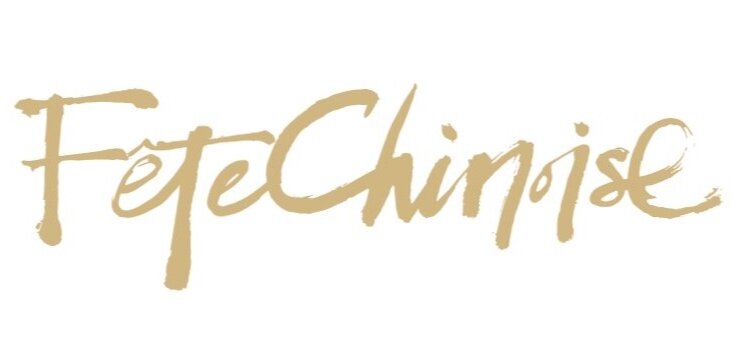

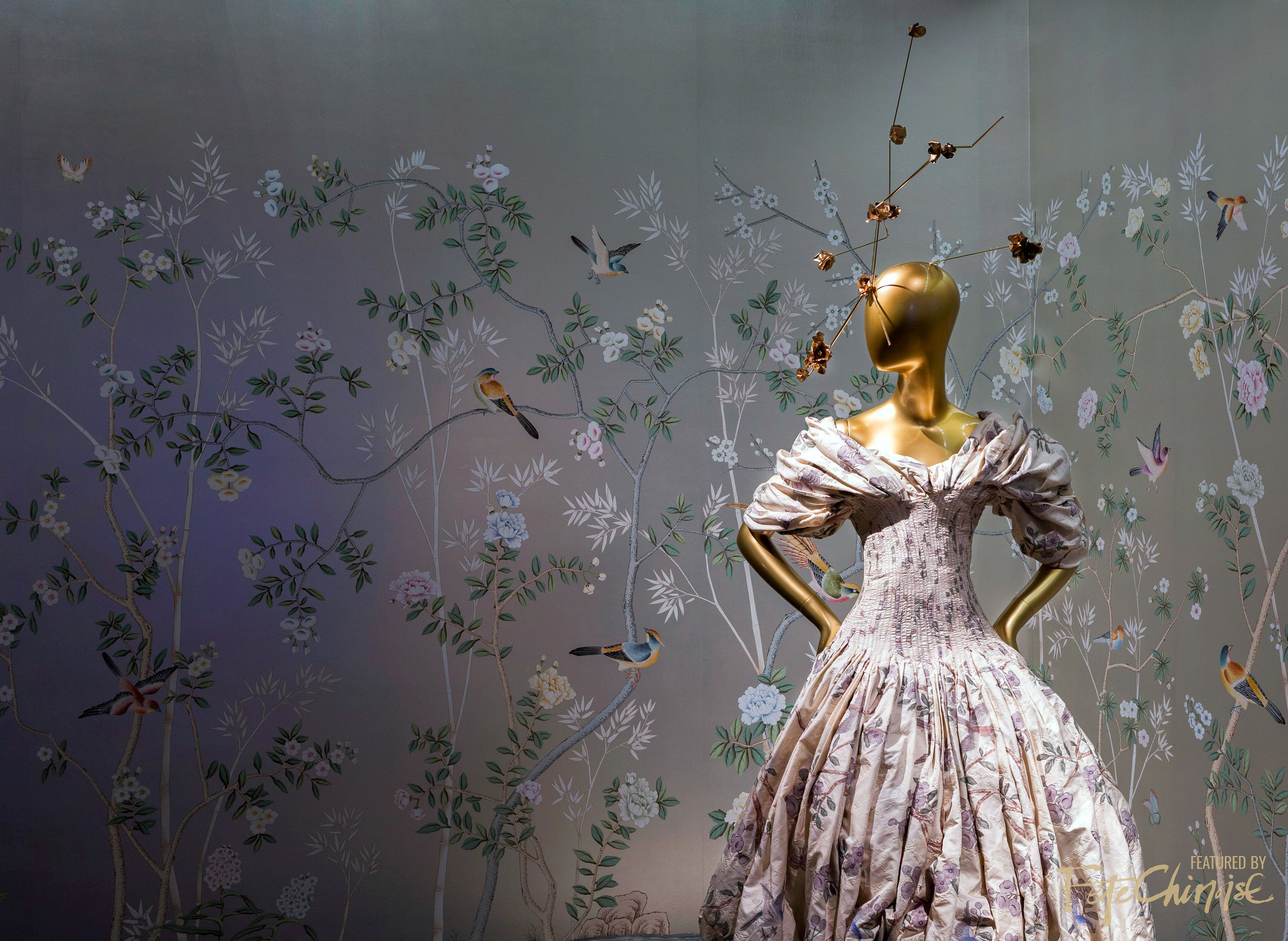
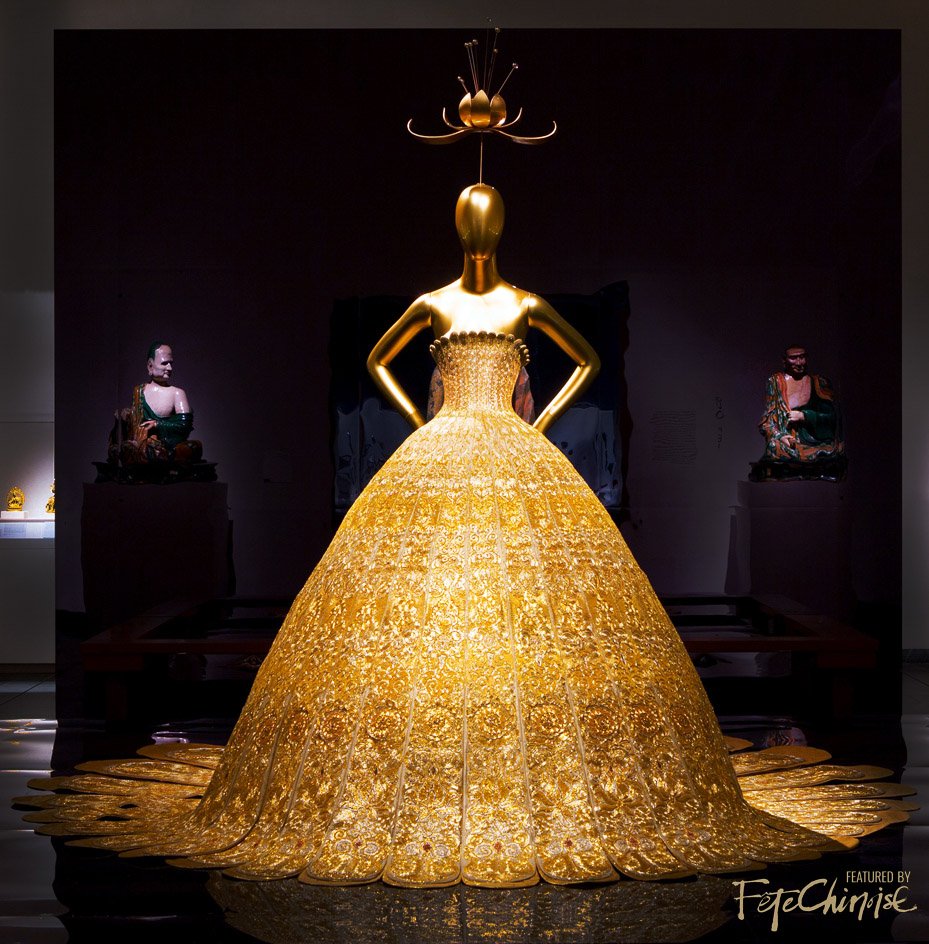
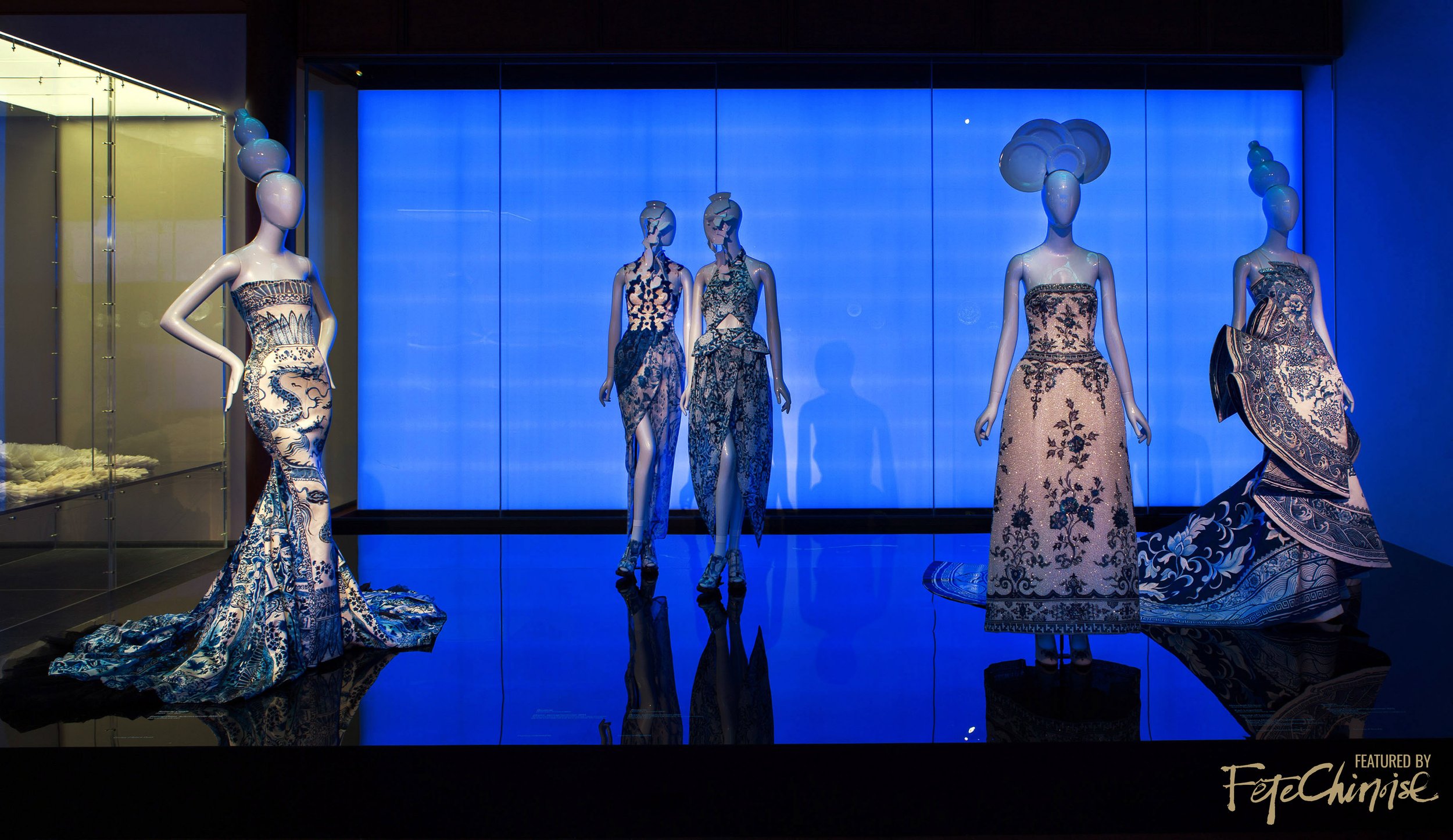
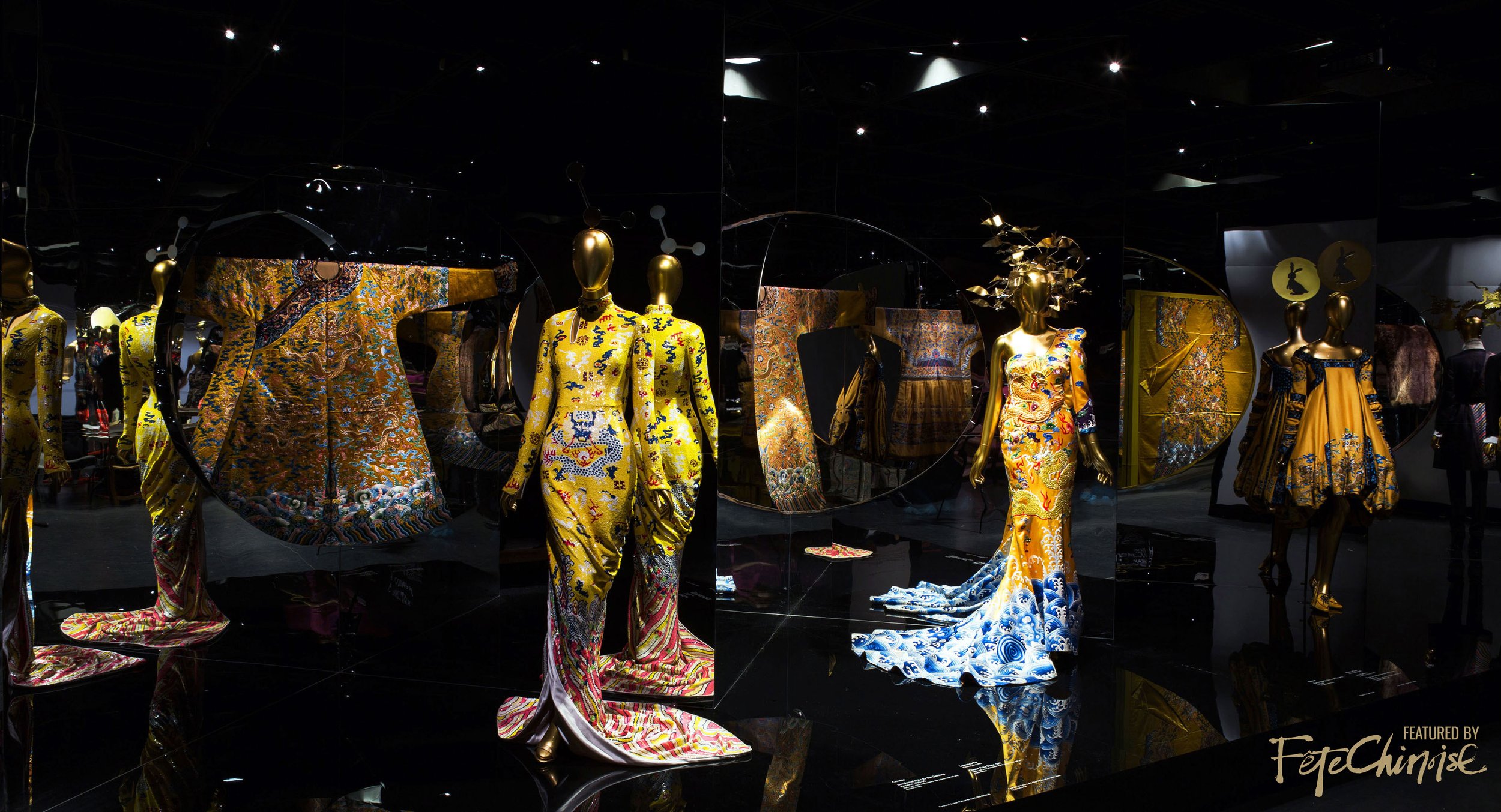



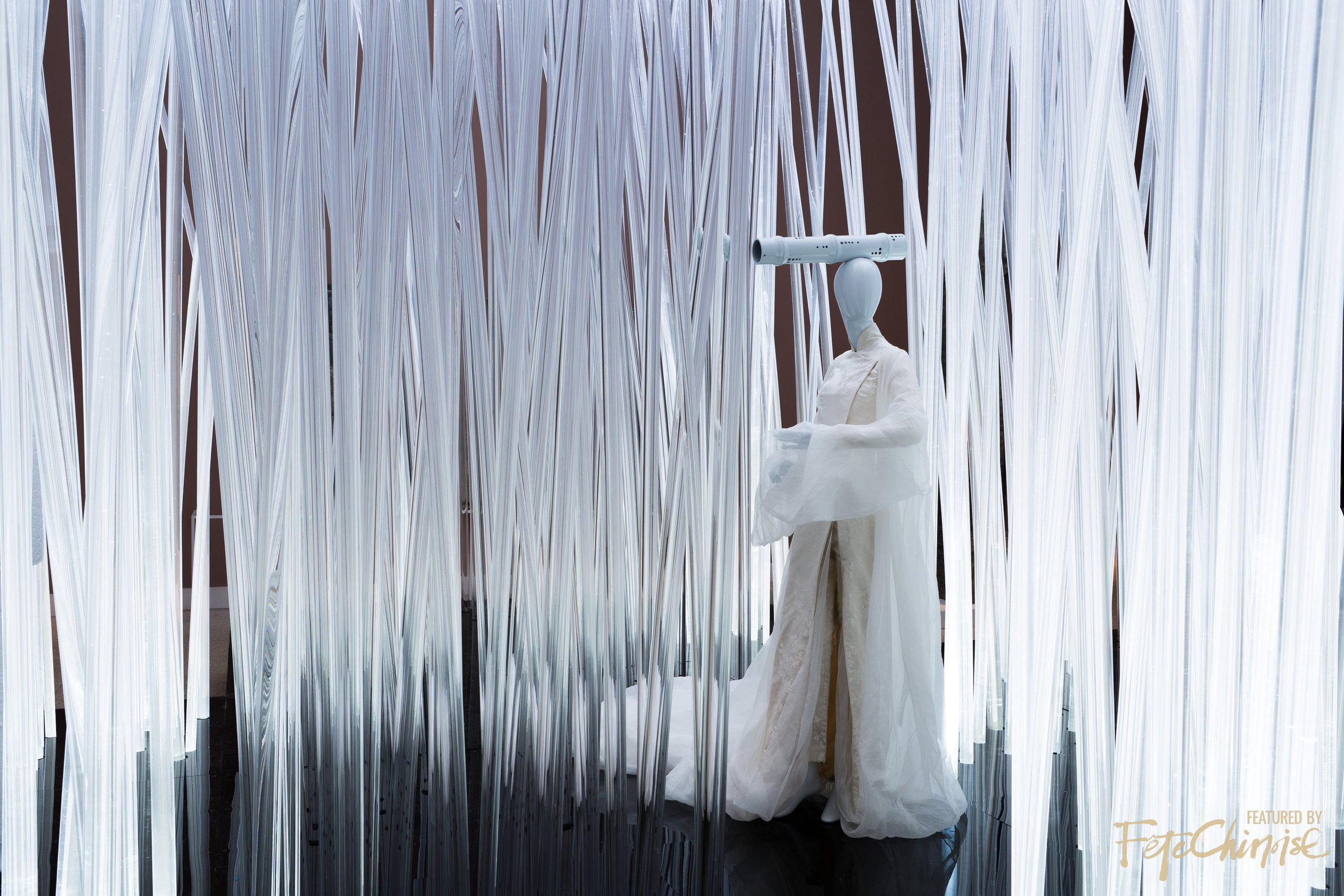






Benevolence is Kevin Matthew Wong’s creative exploration of the Hakka-Chinese experience in Canada, which includes the short documentary Benevolence premiered at the 2023 Reel Asian Film Festival, the art installation Benevolence Hall with Toronto History Museums at The Market Gallery in summer 2024, and now the upcoming theatrical production Benevolence, set to premiere at Tarragon Theatre in April 2025.